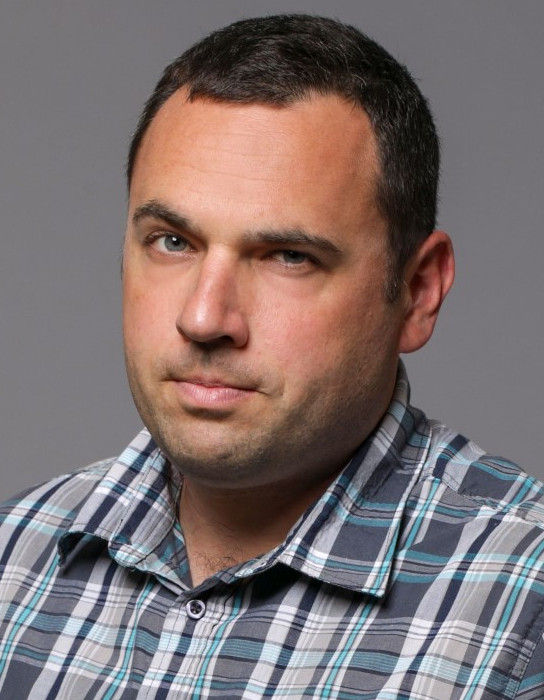Optical Communication Networks
Data is displayed for academic year: 2023./2024.
Lecturers
Course Description
Optical core, city and access networks. Transmission restrictions due to linear and nonlinear effects. Optical network components and basic operating principles. Optical network architectures and topologies. Circuit, packet and burst switching optical networks. Wavelength division multiplexing (WDM) networks. Optical transmission, cross-connecting and switching. Optimum wavelength routing and assignment. Optical Time Domain Multiplexing (OTDM) networks. Data transmission techniques in optical communication networks (SDH, Ethernet, OTN).
Study Programmes
University graduate
[FER3-HR] Audio Technologies and Electroacoustics - profile
Elective Courses
(2. semester)
[FER3-HR] Communication and Space Technologies - profile
Elective Courses
(2. semester)
[FER3-HR] Computational Modelling in Engineering - profile
Elective Courses
(2. semester)
[FER3-HR] Computer Engineering - profile
Elective Courses
(2. semester)
[FER3-HR] Computer Science - profile
Elective Courses
(2. semester)
[FER3-HR] Control Systems and Robotics - profile
Elective Courses
(2. semester)
[FER3-HR] Data Science - profile
Elective Courses
(2. semester)
[FER3-HR] Electrical Power Engineering - profile
Elective Courses
(2. semester)
[FER3-HR] Electric Machines, Drives and Automation - profile
Elective Courses
(2. semester)
[FER3-HR] Electronic and Computer Engineering - profile
Elective Courses
(2. semester)
[FER3-HR] Electronics - profile
Elective Courses
(2. semester)
[FER3-HR] Information and Communication Engineering - profile
Elective Courses
(2. semester)
[FER3-HR] Network Science - profile
Elective Courses
(2. semester)
Elective Courses of the Profile
(2. semester)
[FER3-HR] Software Engineering and Information Systems - profile
Elective Courses
(2. semester)
Learning Outcomes
- identify advantages i limitations of optical transmission
- identify specific applications of optical technology in core, metropolitan and access networks
- identify techniques and technology of optical switching and cross-connecting
- use optical components in optical network design
- describe the underlying concepts of Wavelength Division Multiplexed (WDM) networks
- understand principles of network components operation
- describe the architecture of WDM networks
- to understand transmission techniques in optical networks
Forms of Teaching
Lectures
Lectures are held in two hour units.
ExercisesLectures are held in two hour units.
Independent assignmentsProblems are assigned to students, they have to elaborate them and present the results on one of the lectures.
LaboratoryLectures are held in two hour units.
Grading Method
| Continuous Assessment | Exam | |||||
|---|---|---|---|---|---|---|
| Type | Threshold | Percent of Grade | Threshold | Percent of Grade | ||
| Laboratory Exercises | 50 % | 20 % | 50 % | 20 % | ||
| Class participation | 0 % | 10 % | 0 % | 10 % | ||
| Mid Term Exam: Written | 10 % | 40 % | 0 % | |||
| Final Exam: Written | 10 % | 30 % | ||||
| Exam: Written | 50 % | 70 % | ||||
Week by Week Schedule
- Evolution of optical networks, Topology of optical networks; Access and core networks, Tendencies of development of optical networks: requirements to WDM with a large number of wavelengths, long-distance and high-speed transmission, Long-term development of optical networks; All-optical networks; Architecture and components for all-optical networks, Design of optical networks; strategies for optical networks development
- Principle of operation of optical fibers; Optical fiber types, Geometric optics analysis of optical fibers; Modes in multimode fibers, Topology of optical networks; Access and core networks, Methods for increasing the throughput of optical links
- Rigorous method of analysis of cylindrical fibers; Modes in optical fiber; Frequency dependence of the propagation constant and the number of modes, Losses in optical fibers; Infrared and ultraviolet absorption; Rayleigh scattering; Photonic crystal fibers, Chromatic dispersion (material and waveguide dispersion); Polarization mode dispersion; Compensation of chromatic and polarization mode dispersion, Nonlinear effects: four-wave mixing, self-phase and cross-phase modulation; Stimulated Raman scattering; Stimulated Brillouin scattering
- Wave and particle properties of light; Wave coherence, interferometers; Guided optical waves, optical fibers, Properties of semiconductors, quantum mechanics concepts, spontaneous and stimulated emissions, Direct and indirect semiconductors, heterojunctions, Semiconductor optical source types, multimode laser diodes, LED and SLED optical sources, Single mode laser diodes (DFB and DBR), frequency tunable lasers, vertical-cavity surface-emitting laser (VCSEL), Optical modulation methods, modulation schemes for high-speed systems: advantages and disadvantages, Direct modulation of LEDs and laser diodes, Electro-optic, electroabsorption , acuosto-optic and magneto-optic modulators, Semiconductor photodetectors; PIN and avalanche photodiode, Noise sources in photodetecors; Determination of Bit Error Rate (BER); Receiver sensitivity
- Principle of operation of optical amplifiers; Gain saturation, ASE noise in optical amplifier;, noise properties of optical amplifier cascade, Erbium-doped fiber amplifiers (EDFA); Semiconductor optical amplifiers (SOA); Raman amplifiers, Fiber optic measurement techniques; Measurement devices; Optical network monitoring
- Optical networks; Non-communication optical systems, Multiplexing in optical communication systems; TDM i WDM systems; Properties of DWDM amd CWDM systems
- Multiplexing in optical communication systems; TDM i WDM systems; Properties of DWDM amd CWDM systems, Optical link design: loss budget and rise-time budget analysis, Optical link design; Power penalty evaluation, Power penalty analysis (finite extinction ratio, dispersion, crosstalk, etc;), Practical problems in the design and implementation of communication systems
- Midterm exam
- Optical switching and cross-connecting, Routing and wavelength assignment: routing algorithms, planning protective capacity, assigning wavelengths in WDM optical networks
- Access and distribution optical networks; FTTx concept, Passive optical networks; TDM-PON and WDM-PON, Standards for core optical network
- Topology of optical networks; Access and core networks, Access and distribution optical networks; FTTx concept, Passive optical networks; TDM-PON and WDM-PON
- Standards for core optical network
- Optical network survivability; SDH/SONET ring protection; WDM ring protection; Optical network protection schemes
- Optical network control, Standards for core optical network
- Final exam
Literature
(.), Osnovne arhitekture mreža,
(.), Optical Networks; A Practical Perspective,
(.), Optical WDM Networks,
(.), Fiber-Optic Communication Systems,
(.), Fiber-Optic Communication Systems,
For students
General
ID 222572
Summer semester
5 ECTS
L0 English Level
L1 e-Learning
30 Lectures
0 Seminar
6 Exercises
9 Laboratory exercises
0 Project laboratory
0 Physical education excercises
Grading System
85 Excellent
70 Very Good
55 Good
40 Sufficient


 Pristupačnost
Pristupačnost
